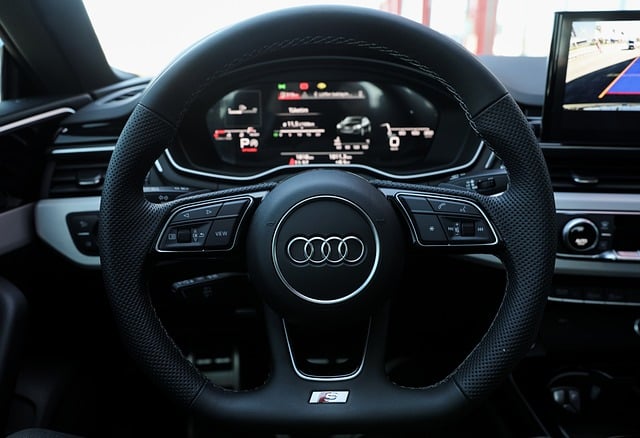Air intake filters, crucial for maintaining automotive and HVAC system efficiency, vary in material, construction, and size (measured in microns). Larger filter sizes trap coarser particles but may let fine ones through, while smaller sizes capture finer particles but require more frequent replacement. When comparing air intake filter sizes, consider vehicle type, driving conditions, climate, and specific engine requirements to ensure optimal filtration, peak performance, and long-term cost savings. Different designs like high-flow or performance filters cater to enhanced power or everyday driving needs, respectively.
Air intake filters play a vital role in maintaining engine performance and efficiency across various sectors, from automotive to industrial applications. This article delves into the critical component of air intake filtration, focusing on the key distinction: filter size. We explore how different air intake filter sizes impact airflow and overall engine health, offering a comprehensive comparison chart for popular options (3″, 4″, 5″). Understanding these variations is essential for optimizing engine performance and fuel economy in real-world scenarios.
- Understanding Air Intake Filters and Their Roles
- – Importance of air intake filters in vehicles and machinery
- – Types of air intake filters (high-flow, performance, etc.)
Understanding Air Intake Filters and Their Roles

Air intake filters are an essential component in many systems, from automotive engines to HVAC (Heating, Ventilation, and Air Conditioning) units. These filters play a crucial role in maintaining optimal system performance and efficiency by removing contaminants from the air stream. Understanding their functionality and varying capacities is key when considering an air intake filter sizes comparison.
Each air intake filter is designed to capture and retain different particles based on its material composition and construction. For instance, some filters focus on trapping dust, dirt, and debris, while others are more efficient at capturing finer particles like pollen or smoke. The size of the filter, often measured in microns, determines its capacity to trap pollutants. Larger filter sizes can capture coarser particles but may allow finer ones to pass through, whereas smaller filter sizes offer superior fine particle capture but require more frequent replacement.
– Importance of air intake filters in vehicles and machinery

Air intake filters play a vital role in keeping vehicles and machinery running efficiently. These filters are designed to prevent dirt, dust, debris, and other contaminants from entering the engine, where they can cause wear and tear, reduce performance, and lead to costly repairs. By trapping these particles, air intake filters ensure that only clean, filtered air reaches the engine, enhancing its lifespan and overall functionality.
When comparing different air intake filter sizes, it’s crucial to consider factors such as vehicle type, driving conditions, and climate. Larger filter sizes typically offer greater filtration capacity, allowing for more airflow and better performance, especially in dusty or rugged environments. On the other hand, smaller filters may be suitable for urban settings with lower contamination levels, prioritizing efficiency and cost-effectiveness. The right air intake filter size directly impacts engine performance and can contribute to significant savings over time.
– Types of air intake filters (high-flow, performance, etc.)

Air intake filters come in various types, each with unique characteristics that cater to different performance needs. High-flow filters, for instance, are designed to optimize air volume and flow rate, making them popular among car enthusiasts seeking enhanced engine power. These filters often use advanced media like oiled wool or synthetic fabrics to trap contaminants while minimizing airflow restriction.
In contrast, performance filters focus on balancing flow and efficiency. They typically offer a middle ground between high-flow and standard filters, providing adequate air intake for everyday driving conditions. When comparing air intake filter sizes, it’s crucial to consider not only the physical dimensions but also the intended application and desired performance level. Different vehicles and engines have specific requirements, so selecting the right type and size of air intake filter is essential for optimal engine performance and efficient filtration.
In comparing different air intake filter sizes, it’s clear that each has its unique advantages and applications. From high-flow filters designed for peak performance to more standard options, understanding these variations is key to ensuring your vehicle or machinery operates at its best. When selecting an air intake filter, consider not just size but also the specific needs of your engine and driving conditions. By making an informed choice, you can enjoy improved fuel efficiency, enhanced power output, and reduced wear on your engine, ultimately contributing to a smoother and more enjoyable driving experience.














